Trilliant or trillion-cut diamonds possess a captivating allure that is hard to ignore. You may have come across one without knowing its name, but once seen, it’s impossible to forget.
The unique size, shape, and cut of a trillion-cut diamond make it anything but ordinary. Today, we’re here to delve into the world of these remarkable diamonds and provide you with all the information you need.
Before purchasing a trillion cut diamond, there are a few essential things you should know. When it comes to diamonds, receiving advice as a buyer is always valuable.
It’s important to understand that this diamond isn’t suitable for everyone, and that’s precisely why we’ve created this guide. Now that you have an idea of what to anticipate and look forward to, we recommend diving right in and exploring the captivating world of the magnificent trillion-cut diamond.
DESIGN YOUR OWN ENGAGEMENT RING: START WITH A SETTING OR START WITH A DIAMOND. IT’S REALLY UP TO YOU!
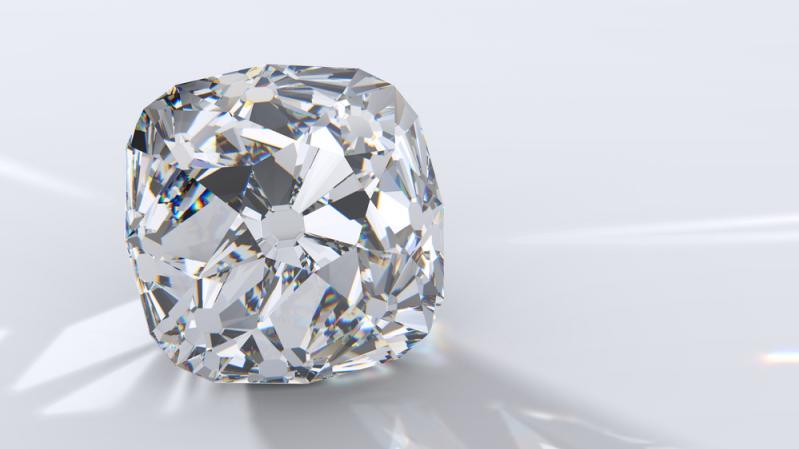
The History Of The Trillion Cut Diamond
Trillion-cut diamonds belong to a distinguished group of diamonds that share a fascinating history. It is this historical significance that contributes to their majestic appeal.
When an item, especially a diamond, carries a story, it transforms from a mere object into a representation of that narrative and lore.
For centuries, diamonds have been worn as symbols of class and wealth, and as a result, certain cuts have stood the test of time.
So, why are we sharing this information? Well, the trillion cut has roots in one of the oldest known diamond cuts. Over the decades, variations of this triangular-shaped cut have emerged under different names like “trillion,” “Trielle,” or “trilliant.”
The modern version of the trilliant, the one we all adore today, was initially created by a diamond merchant named Leon Finker in New York during the early 1960s. His son, Marvin Finker, later patented the design in the early 1970s, which is now known as the “Trielle.”
Around the same time, other diamond merchants, including the Henry Meyer Diamond Company, also developed their own versions of this three-sided stone but without notable success.
The Finker family is credited as the original creators of the trillion cut diamond. Today, both “trillion” and “trilliant” are used interchangeably to describe a triangular-shaped diamond. It is believed that the trillion cut drew inspiration from a variety of sources.
Influences such as the briolette cut dating back to the 1400s and the Old Mine cut from the 1700s have played a significant role in shaping the trillion cut. The modern round brilliant cut, which has been in existence since 1919, has also had a profound impact on its development.
Centuries of diamond-cutting advancements have contributed to the refinement of the trillion cut, making it the finest iteration derived from these earlier cuts.
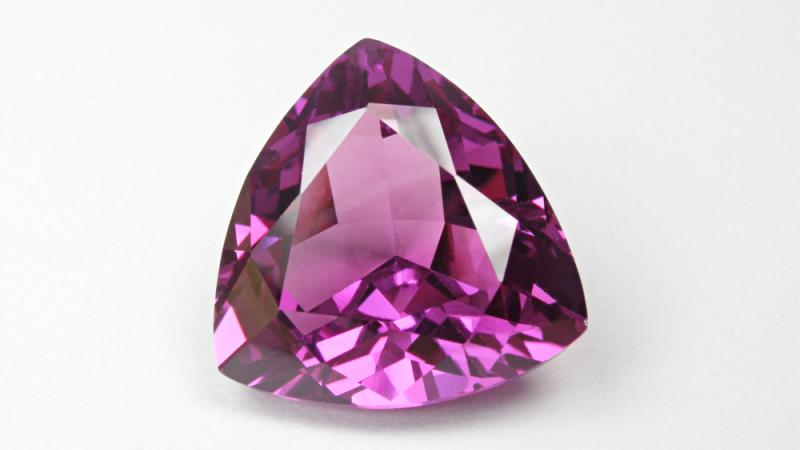
What Is A Trillion-Cut Diamond?
Now, we understand that not everyone is interested in the history of diamonds. So, let’s shift our focus to what the trillion cut actually entails and how to identify it.
The trillion cut diamond has a distinctive appearance that is hard to overlook, so recognizing it shouldn’t pose any challenges. It is a triangular-shaped diamond that is seldom found as the main focal point in jewelry. Instead, it is primarily used as an accent diamond.
This means that it’s rare to come across a ring, for example, with a trillion cut diamond as the central stone. Why is that? Well, it’s because of the unique shape of trillion cut diamonds, which make them ideal for accentuating larger and more rounded diamonds.
However, it doesn’t imply that trillion cut diamonds aren’t suitable to be centerpieces. That notion is simply untrue. It just means that, due to their specific physical characteristics, they are most commonly found as complementary diamonds in jewelry, enhancing the main focal point.
These diamonds, with such a role, are often overlooked by beginners in the diamond world. But those with even a bit of experience can instantly recognize the captivating beauty of a trillion cut diamond.
While there are some jewelry pieces that feature the trillion cut diamond as the centerpiece, such cases are relatively uncommon. These gems generally thrive in their supporting role.
That being said, there are specific settings where the trillion-cut diamond can take the spotlight in jewelry. These settings are typically found in delicate and subtle rings or earrings, with minimal additional embellishments. No side diamonds or intricate pave settings are involved. Trillion cut diamonds cater to a niche market of individuals seeking something unique and distinct, a design not commonly found in everyday jewelry.

Clarity Of The Trillion Cut Diamond
Some people may suggest that you shouldn’t worry too much about the clarity of trillion-cut diamonds since they are often used as side stones. However, that is not entirely accurate.
While it is true that many side stones may have lower clarity since they are not as prominently viewed as the centerpieces, this rule doesn’t apply universally to all diamonds used as side stones.
Trillion-cut diamonds are an exception and require extra attention when it comes to clarity. The unique cut of these diamonds allows for the detection of imperfections and inconsistencies in clarity.
To understand clarity in diamonds, let’s refer to the clarity chart provided by GIA (Gemological Institute of America):
- Flawless (FL): No inclusions or blemishes visible under 10x magnification.
- Internally Flawless (IF): No inclusions visible under 10x magnification.
- Very, Very Slightly Included (VVS1 and VVS2): Inclusions so slight that they are difficult for a skilled grader to see under 10x magnification.
- Very Slightly Included (VS1 and VS2): Inclusions are observable with effort under 10x magnification but can be considered minor.
- Slightly Included (SI1 and SI2): Inclusions are noticeable under 10x magnification.
- Included (I1, I2, and I3): Inclusions are visible under 10x magnification, potentially affecting transparency and brilliance.
As you can see, diamond clarity has various categories. Let’s delve into the details.
FL represents the best clarity grade a diamond can achieve. If you come across a trillion-cut diamond with an FL clarity grade, it doesn’t get better than that.
On the other hand, Included grades (I1, I2, and I3) are reserved for diamonds with the poorest clarity. If your trillion-cut diamond falls into these grades, know that there are better options available.
Clarity also impacts the price of a diamond. Lower clarity grades will generally lower the price, while higher grades, especially IF and FL, will raise it.
For optimal appearance, clarity, and light performance, aim for a trillion-cut diamond with a clarity grade of VS1 or VS2 (or higher).
By choosing a diamond within this range, you can ensure a beautiful and clear trillion cut diamond that offers excellent value.
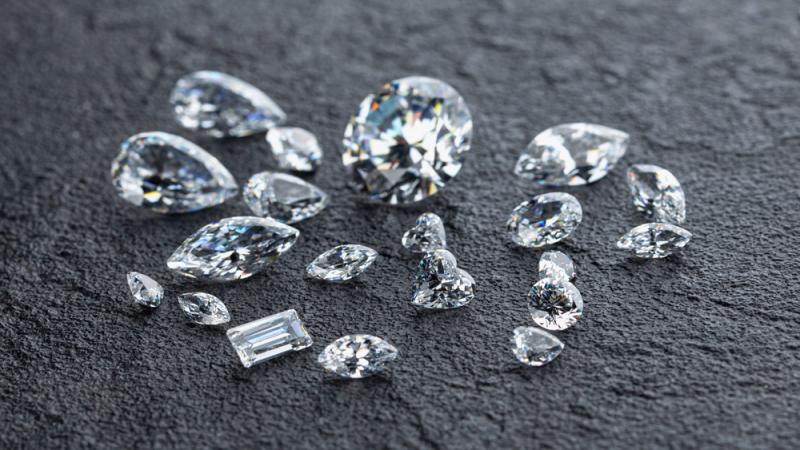
Best Size For Trillion Cut Diamond
Now, considering that trillion-cut diamonds are typically used as side stones and not the main focus of the jewelry, you won’t be looking for large multi-carat diamonds. Instead, you’ll be seeking smaller pieces that complement the centerpiece beautifully.
However, let’s explore the other side of the coin—the scenario where a trillion cut diamond serves as the centerpiece. In this case, the size of the diamond becomes significant. So, let’s discuss the appropriate sizes for both situations: trillion cut diamonds as side stones and as center stones in jewelry pieces.
When it comes to a ring with a 1-carat centerpiece diamond, you should aim for two 0.25-carat trillion-cut diamonds to accompany the main stone. Together, they have a combined weight of half that of the centerpiece diamond. This creates a pleasant balance, ensuring the ring or other jewelry pieces don’t appear overcrowded or overwhelmed by diamonds.
On the other hand, when a trillion cut diamond is the centerpiece, you should consider a slightly larger stone. A 0.25-carat trillion cut diamond might not be substantial enough for a center stone.
Keep in mind that these stones are commonly found in rings and earrings, limiting the opportunity for larger stones. It’s advisable not to exceed a 1-carat weight for a trillion cut diamond as the centerpiece since anything larger may appear too prominent and sit awkwardly on your fingers or ears.
However, choosing something too small might not have the desired impact. A 0.75-carat trillion cut diamond could also work well for earrings since they are separate pieces and will be worn individually on each ear. This will make them stand out even more, as they are worn in pairs.
Ultimately, striking the right balance in size is crucial for both side stones and center stones, ensuring the overall aesthetics and visual appeal of your jewelry.
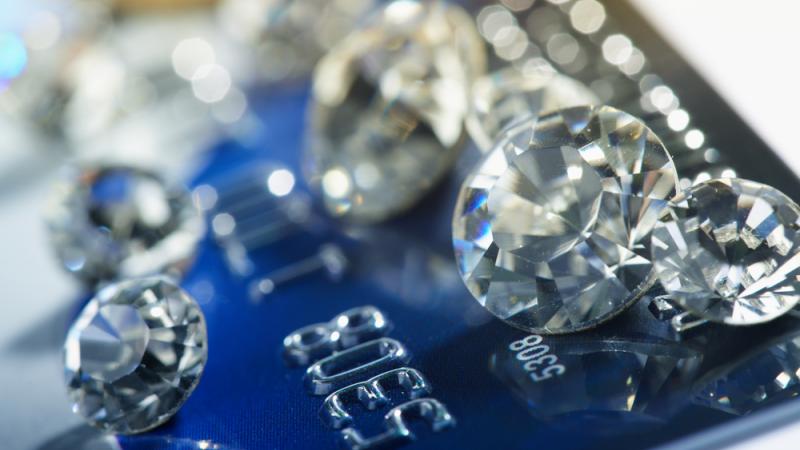
Price & Value
The price range of trillion-cut diamonds may come as a surprise. It’s not as high as some may expect, but it’s also not as low as one would anticipate for a side stone.
On average, a 0.40-carat trillion cut diamond can cost around $700. While this may not be exorbitant, it’s important to note that you would typically need two diamonds to create a matching pair.
However, it’s crucial to consider the overall cost when using these diamonds as side stones. In addition to the price of the diamonds themselves, you need to factor in the cost of the centerpiece stone and the actual ring or jewelry setting.
Compared to other options available on the market, trillion cut diamonds used as side stones can be relatively expensive. It’s important to weigh the value and quality against alternative options.
The price of these diamonds falls somewhere in the middle range, leaning toward the higher end. While $700 may seem significant for a side diamond, it should be a worthwhile investment. That being said, it’s worth exploring other options to ensure you find a decent trillion cut diamond at a reasonable price.
When considering side diamonds, there are various alternatives to choose from. If you’re aiming for the most appealing option, your primary focus should be finding a high-quality trillion cut diamond at a fair price.
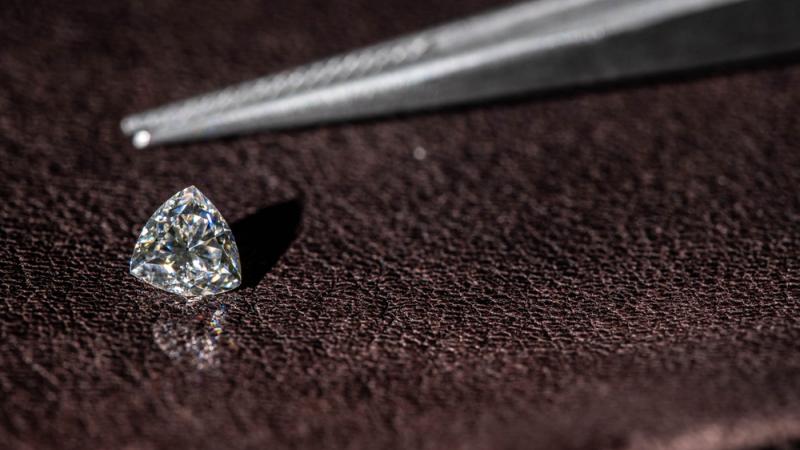
Trillion-Cut Diamond: Conclusion
When it comes to selecting a precious stone as rare and unique as the trillion cut diamond, there are several important factors to consider.
Apart from its rich history, this diamond cut offers a multitude of possibilities, whether it’s used as the centerpiece or a side stone in a setting.
Don’t be discouraged by the fact that this cut is predominantly used for side stones. In truth, there are few stones that can rival the trillion-cut diamond in its suitability as a side stone.
This diamond truly encompasses all desirable qualities, from its captivating history and origins to its distinct appearance and reasonable prices. In other words, if you’re seeking perfection, look no further than the allure of trillion cut diamonds!


